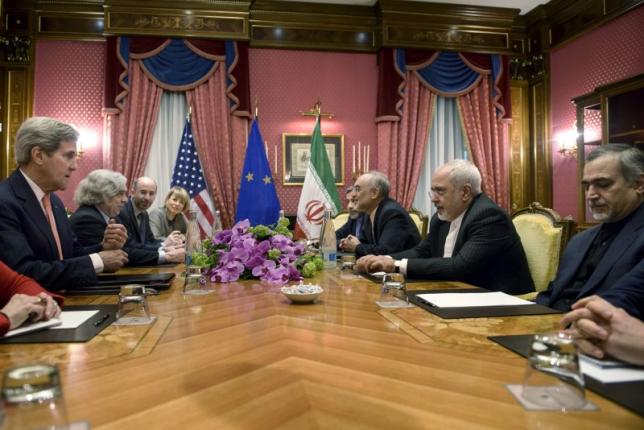
After almost two years of negotiations, the United States, Iran and five other world powers have announced a comprehensive deal that limits Tehran's nuclear programme in exchange of lifting the economic sanctions.
In the last eight days, the negotiations in Switzerland were on the brink of a collapse several times. But finally on Thursday, Iran and the six world powers reached a decision.
A CNN report noted that even though there are still "plenty of details left to iron out," but the Iran nuclear deal was a significant step towards a landmark deal aimed at keeping Iran's nuclear program peaceful.
In the meantime, while celebrations have already kicked off in Tehran, senior journalist Lyse Doucet sounded sceptical when she told BBC News: "As hard as it was to reach this preliminary agreement, it will be even harder to draft a final deal by the end of June.
Doucet, but agreed that the final deal would eventually pave the way to make the world a safer place. "But, if negotiators do it, it will be a victory for diplomacy which, they believe will make the world a much safer place," Doucet highlighted.
While the International negotiators in Switzerland have announced the broad terms of the Iranian nuclear deal, IBTimes India here has translated 7 broad terms from the deal in plain-simple English:
Centrifuges
What the agreement says?
Iran has agreed to reduce its installed centrifuges by approximately two-thirds. It will go from having about 19,000 installed at present to 6,104 installed under the deal, with only 5,060 of these enriching uranium for 10 years. All 6,104 centrifuges will be IR-1s, Iran's first-generation centrifuge.
In plain English
Centrifuge is an apparatus that rotates at high speed and by centrifugal force separates substances of different densities. Uranium Centrifuge is used to enrich uranium, a natural ore, into nuclear fuel that is also used for making a nuclear bomb. By reducing the number of centrifuges, the deal ensures that Iran will have a small nuclear programme. The deal also asks Tehran to use only IR-1s, which is Iran's first-generation centrifuge, and the least capable centrifuges.
Uranium enrichment
What the agreement says?
Iran has agreed to not enrich uranium over 3.67% for at least 15 years.
In plain English
The agreement allows Iran to turn raw uranium into nuclear fuel; but by limiting it to 3.67%, the deal ensures that it cannot create a nuclear bomb.
Stockpile
What the agreement says?
Iran has agreed to reduce its current stockpile of about 10,000 kg of low-enriched uranium (LEU) to 300 kg of 3.67% LEU for 15 years.
In plain English
The tentative deal asks Iran to give up almost 97% of its nuclear stockpile,which will guarantee that Iran can use it only for a nuclear power plant and will have give up on making a bomb.
Plutonium Plant in Arak
What the agreement says?
Iran has agreed to redesign and rebuild a heavy water research reactor in Arak, based on a design that is agreed to by the P5+1, which will not produce weapons grade plutonium, and which will support peaceful nuclear research and radioisotope production.
In plain English
Iran currently has a facility at Arak for making and storing potentially weapons-grade plutonium. A nuclear bomb uses either uranium or plutonium. By "repurpsoing" Iran's Arak facility, the deal ensures that the facility only makes nuclear fuel to run nuclear power plants.
The deal also calls for Iran to redesign the Arak facility as per the specifications of the group of six world powers (P5+1), after destroying or removing the core of the reactor from the country.
Transparency
What the agreement says?
The IAEA will have regular access to all of Iran's nuclear facilities, including to Iran's enrichment facility at Natanz and its former enrichment facility at Fordow, and including the use of the most up-to-date, modern monitoring technologies.
In plain English
The deal ensures that Iran is not able to cheat. As per the agreement, inspectors will be able to visit only Iran's nuclear sites, but can also inspect its uranium mines and mills and centrifuge plants. In short, it attempts to ensure that Iran is not able to carry out a nuclear program in secrecy.

















